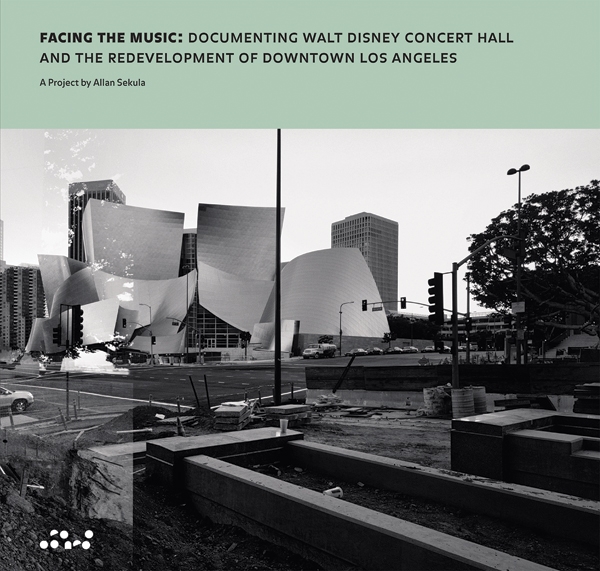Facing the Music is a project that occupied (albeit not to the exclusion of everything else) the late Allan Sekula from 1985 until his death in 2013. So it’s a key, if incomplete, work. At its centre is the construction and opening of the Frank Gehry-designed, Disney family-funded Walt Disney Concert Hall, which opened in 2003 in the Bunker Hill area of Los Angeles. Following the impact of Gehry’s Guggenheim Museum in Bilbao, the Concert Hall was touted as a project that would reshape and regenerate the image of civic Los Angeles. Perfect fodder for an artist and writer whose reputation rests on his documentation of large economic systems.
Initially this book was to be a catalogue accompanying an exhibition that took place at CalArts’s REDCAT Gallery (also funded by the Disney family) in 2005. The ten-year delay in its appearance suggests that documenting his hometown was something that had become Sekula’s personal ‘Moby Dick’.
Sekula’s exhibition had featured both his own work and that of four others – photographers James Baker, Anthony Hernandez and Karin Apollonia Müller, and filmmaker Billy Woodberry – whom he had invited to join him on a five-year project documenting the construction, its effect on the communities around it and LA civic society in general. Their works and the exhibition are documented in the present book, and suggest that one of the problems of documenting ‘the real’ Los Angeles is that you are often creating an image of a carefully constructed image (rather than a reality): whether it is Gehry’s shiny architecture or the people who see themselves in it. (Stills from Sekula’s Gala, a 2005 film documenting the Concert Hall’s opening, are particularly relevant in the latter respect.) There’s a sense that Sekula is relentlessly struggling to reach some sort of truth. Not the one presented to him in Bunker Hill in 2003, but something more ‘real’. And he’s taking a punt, of course, on the fact that such a thing exists.
If architecture critic Reyner Banham’s influential Los Angeles: The Architecture of Four Ecologies (1971) or Ed Ruscha’s photobooks seem to make Los Angeles more easily graspable in word and image respectively, then it’s the fact that Sekula clearly struggled in his attempts to depict the place he knew best (see his lecture ‘Los Angeles: The Graveyard of Documentary’, included here) that makes this book worth reading. That and a facsimile of one of the texts that was important to Sekula himself: Louis Adamic’s 1930 essay, ‘Los Angeles! There She Blows!’.
This article was first published in the April 2015 issue.
